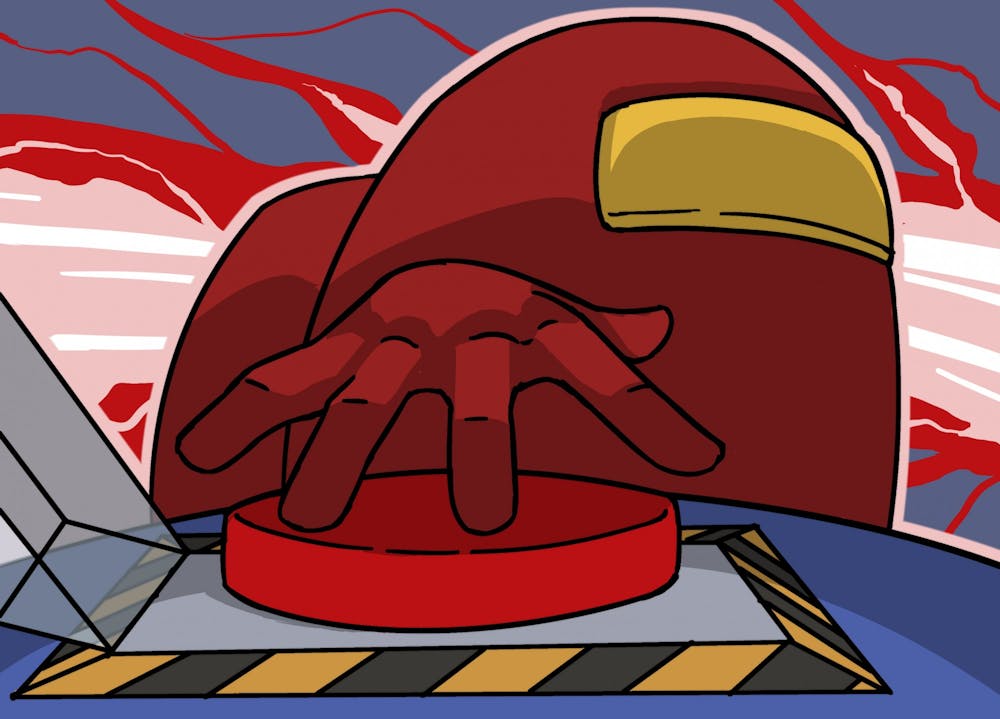Video games tend to attract players looking for an escape from reality, searching for a feeling of community, adventure or control. And yet, the most popular game at the moment is centered on deceit and voting.
Among Us places players in a variety of sci-fi locales, such as a spaceship or a research station and assigns them as either a crewmate or an impostor.
The crewmates’ goal is to complete tasks around the map and reveal the impostors, while the impostors’ simple goal is to eliminate crewmates, either by murdering the crew or by sabotaging the ship while keeping players from resolving it.
The catch is all the players’ roles are hidden, so when a dead body is found, the crewmates can all turn against each other and unknowingly assist the impostors in the voting phase.
InnerSloth, a game studio made up of three developers, launched the game on June 15, 2018, exclusively on mobile platforms. At the time of release, the game drew only about 30 to 50 players per hour.
The game grew in popularity around the globe in countries like Brazil, South Korea and Mexico until the summer of 2020 when Twitch streamer “sodapoppin” began playing. The game's player base has since ballooned to where the game hosts over 70,000 players per hour.
It’s popularity even reached the halls of Congress when Rep. Alexandria Ocasio-Cortez (D-NY) and Rep. Ilhan Omar (D-Minn.) streamed themselves playing in an effort to encourage young people to vote. The stream drew approximately 440,000 concurrent viewers at its peak, the third most-watched individual stream ever on Twitch.
Christopher Dorch, a junior studying broadcast journalism, jumped into the game after a similar game, Space Station 13, began to die out.
“Among Us takes the ideas of Space Station 13 and really streamlines it and makes it digestible and arcadey,” Dorch said. “It takes an idea that’s not super original and makes it accessible and perfects it.”
Dorch described himself as a “sucker for space games” and was drawn immediately to Among Us, and the game’s deception-based gameplay kept him hooked.
“I like games that are a whodunnit kind of situation," he said. "Those games are really fun, especially if they put you in a position where you have to lie and interact with other people."
Simur Khurana, a junior studying kinesiology, said he plays with a group of friends who introduced him to the game. They compared the game to another named Mafia, one you play at a party rather than online.
Khurana said his group of friends have played so much together he can sometimes tell when someone is lying, such as using a higher-pitched voice or talking faster.
“If someone who normally talks doesn’t talk, or someone gets defensive really quickly,” he said.
While he may not be the best liar, he still enjoys playing as the impostor thanks to the extra layers it adds to each game.
“When you are impostor, it's a lot of thinking, with every step you take, every move you make, you’re thinking about it,” he said.
Dorch plays on his computer and found the people playing the game different from the “awful” communities he was used to.
“Everyone seemed to be very talkative, seemed to be having fun with it,” Dorch said.
Khurana thought Among Us was a perfect game in the current moment and allowed for a different kind of connection.
“I think that it encourages people to stay indoors, which is critical in slowing down the virus, and it provides a chance for people to still communicate with each other,” Khurana said.
The game is still performing well, hosting an average of over 176,000 players throughout October, and, at one point, hosting a peak of 261,923 players over a 24 period.
The three-person development team has no plans of stopping either, as they canceled an in-progress sequel to add new content to the original. They have also taken feedback from the community by adding symbols to the wiring task, where players connect matching colored wires, to make it accessible for players who are colorblind.
For both players and the studio, it seems Among Us won’t be voted out anytime soon.
Reach the reporter at rknappen@asu.edu and follow @RyanKnappenber3 on Twitter.
Like The State Press on Facebook and follow @statepress on Twitter.




